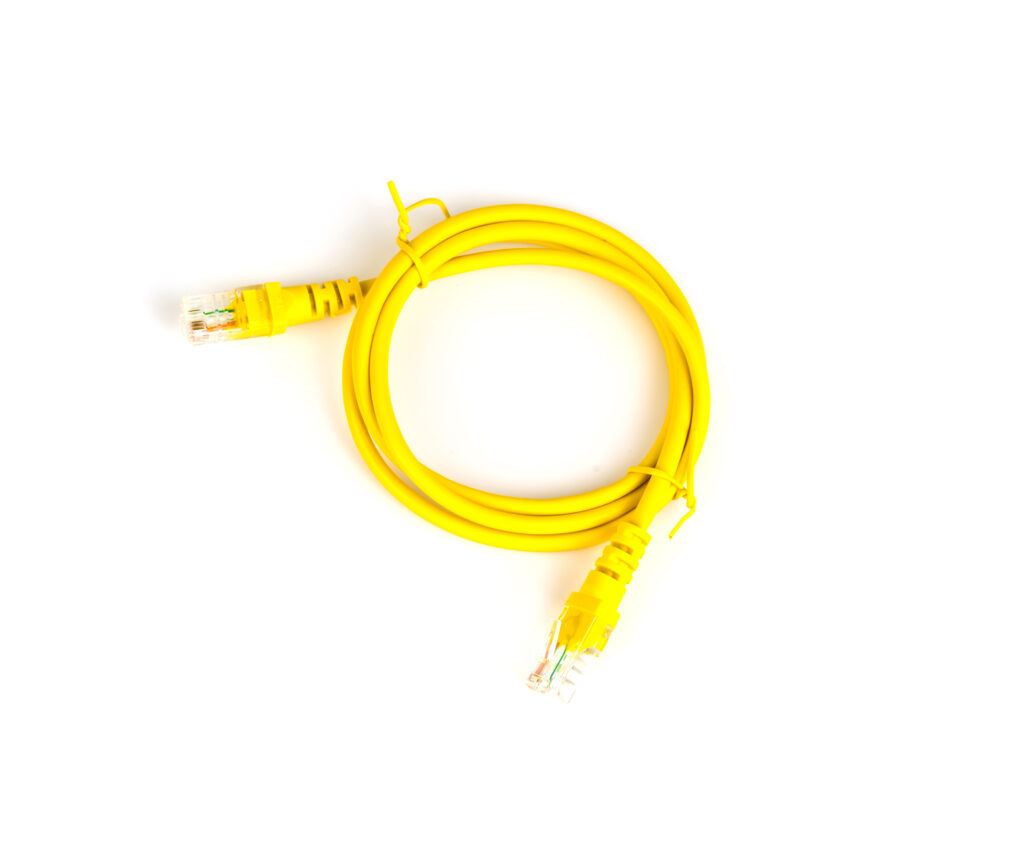Jun 07 2024
/
Ethernet Cable Color Codes
In the world of digital networking, understanding the color codes of Ethernet cables is crucial. Whether you’re setting up a home network or managing an enterprise-level infrastructure, knowing these color codes can save you time and prevent errors.

What are Ethernet Cable Color Codes?
Ethernet cable color codes refer to the color scheme used for the individual wires within an Ethernet cable. These codes are part of the TIA/EIA-568 standard, which ensures consistency across different manufacturers and installations. The most commonly used Ethernet cables are Cat5e, Cat6, and Cat6a, each containing eight wires twisted into four pairs.
Why are Ethernet Cable Color Codes Important?
Color codes are essential for several reasons:
- Ease of Installation: Properly color-coded cables make it easier to identify and organize connections, reducing the risk of errors during installation.
- Maintenance and Troubleshooting: When issues arise, being able to quickly identify and trace cables makes troubleshooting much more efficient.
- Standards Compliance: Adhering to standardized color codes ensures compatibility and reliability across different devices and networks.
What Do the Colors Represent?
The TIA/EIA-568 standard assigns specific colors to each wire within an Ethernet cable. Here’s a detailed explanation of what each color indicates:
- Orange: This wire is part of pair one and carries the transmit data signal (TX+).
- White with Orange Stripe: Also part of pair one, this wire carries the matching signal (TX-).
- Green: This wire belongs to pair two and carries the received data signal (RX+).
- White with Green Stripe: Also part of pair two, this wire carries the corresponding signal (RX-).
- Blue: Part of pair three, this wire is used for Power over Ethernet (PoE) applications.
- White with Blue Stripe: Also part of pair three, this wire carries the corresponding signal.
- Brown: This wire is part of pair four and is used for 10GBASE-T applications.
- White with Brown Stripe: Also part of pair four, this wire carries the corresponding signal.
The T568A and T568B Standards
There are two primary standards for Ethernet cable color codes:
T568A
- Pair 1 (Blue and Blue/White):
- Pin 4 (Blue)
- Pin 5 (Blue/White)
- Pair 2 (Orange and Orange/White):
- Pin 3 (Orange)
- Pin 6 (Orange/White)
- Pair 3 (Green and Green/White):
- Pin 1 (Green/White)
- Pin 2 (Green)
- Pair 4 (Brown and Brown/White):
- Pin 7 (Brown/White)
- Pin 8 (Brown)
T568B
- Pair 1 (Blue and Blue/White):
- Pin 4 (Blue)
- Pin 5 (Blue/White)
- Pair 2 (Green and Green/White):
- Pin 3 (Green)
- Pin 6 (Green/White)
- Pair 3 (Orange and Orange/White):
- Pin 1 (Orange/White)
- Pin 2 (Orange)
- Pair 4 (Brown and Brown/White):
- Pin 7 (Brown/White)
- Pin 8 (Brown)
How to Choose Between T568A and T568B
Compatibility
- T568A is often used in residential installations and is compatible with older telephone wiring.
- T568B is more common in commercial installations and is preferred by many organizations.
Consistency
While either standard can be used, the key is to remain consistent within your network to avoid connectivity issues.
Tips for Installing Ethernet Cables
Plan Your Layout
Before you start, plan the layout of your network. Label your cables and jacks to make future maintenance easier.
Use Quality Tools and Materials
Invest in high-quality cables, connectors, and crimping tools to ensure the reliability and longevity of your network.
Test Your Connections
After installation, use a cable tester to verify that all connections are correct and functioning properly.
Conclusion
Understanding Ethernet cable color codes is essential for anyone working with network installations. By following the T568A or T568B standards, you can ensure a reliable and efficient network setup. Whether you’re a DIY enthusiast or a professional installer, mastering these color codes will help you create a robust and organized network infrastructure.
Frequently Asked Questions
What is the difference between T568A and T568B?
The primary difference between T568A and T568B is the arrangement of the wire pairs in the connector. T568A is often used in residential settings and is compatible with older telephone wiring, whereas T568B is more commonly used in commercial settings and preferred by many organizations.
Can I mix T568A and T568B in my network?
It’s not recommended to mix T568A and T568B wiring within the same network. Mixing the two can result in crossed pairs and connectivity issues. The best practice is to choose one standard and stick with it throughout your entire network.
Do I need special tools to install Ethernet cables?
Yes, using high-quality tools and materials is crucial for a reliable installation. Essential tools include a cable stripper, a crimping tool, and a cable tester. Investing in these tools can save time and prevent potential issues.
How can I ensure my Ethernet cables are properly connected?
After you have installed your Ethernet cables, it’s essential to test each connection using a cable tester. This will help verify that all cables are connected correctly and functioning as intended.
Is it difficult to install Ethernet cables by myself?
Installing Ethernet cables can be a DIY project if you follow best practices and use the right tools. Planning your network layout, labeling cables, and testing connections are crucial steps to ensure a successful installation. If in doubt, seeking advice from a professional can also be a wise choice.
